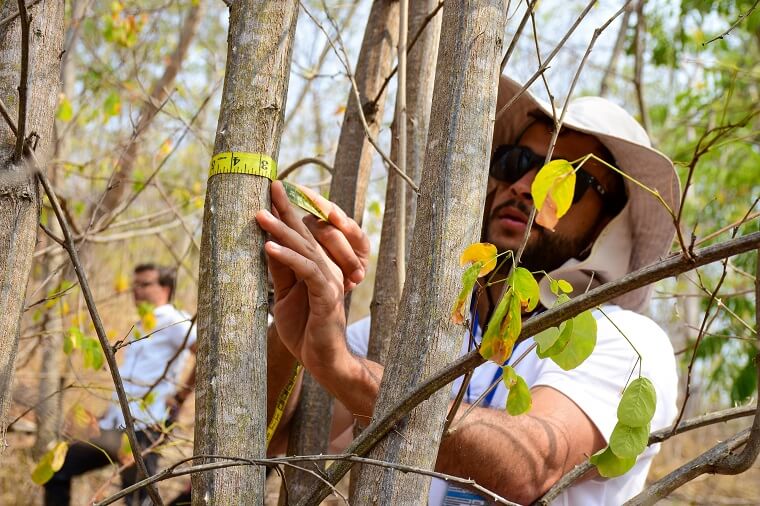The aim is to monitor better the techniques used in the forest restoration process and to analyze if they are adequate
On August 19 and 20, a training session took place in Aimores (MG) focused on the assessment and monitoring of areas undergoing forest restoration. The technicians involved in the recovery of the Doce River Basin attended practical and theoretical classes taught by specialists from Bioflora Restoration Technology.

Photo: Leo Morais
To assess whether the techniques used in the forest restoration process are adequate, the Renova Foundation will monitor 500 springs and 350 hectares of Permanent Preservation Areas (PPAs) that are being recovered in the Doce River Basin – in addition to areas under restoration with and without tailings deposition on the banks of the Gualaxo do Norte, Carmo and Doce Rivers, in Mariana, Barra Longa, Rio Doce and Santa Cruz do Escalvado (MG).
Several indicators are used to evaluate the progress of the forest restoration process, such as the percentage of exposed soil; diversity of tree species; number of regenerating species; among others.

Photo: Leo Morais
Cristina Yuri Vidal, who taught part of the course, explained that monitoring the areas is essential to correct possible errors. “It is very important to follow up and check what is working and what is not. This way, we detect if there is any problem to be addressed so we can make the necessary adjustments,” she said.
Renova Foundation Socio-Environmental Analyst Antonio Sergio Cardoso explained that the monitoring of the areas under recovery in the Doce River Basin should begin in the coming months. For him, the course was important to enable the technicians involved, so that they can not only monitor the areas, but also interpret the information and implement corrective actions necessary to ensure the effectiveness of forest restoration.
“We aim to recover 40,000 hectares of PPAs and 5,000 springs in 10 years, as well as 2,000 hectares in the municipalities of Mariana, Barra Longa, Rio Doce and Santa Cruz do Escalvado. However, one cannot think that forest restoration only consists of only the field planting process. You need to follow up to see if the investment is working. It is through monitoring that we detect if there are any problems”.

Photo: Leo Morais
Forest Inventory
In addition to assessing and monitoring the areas, the Renova Foundation is conducting a study called the Forest Inventory, which consists of a systematic survey of forested areas in the Doce River Basin, through the installation of so-called sample units (plots) where data will be collected from individual plants, such as: height, diameter at breast height, species, among others. The goal is to create reference ecosystems to guide the restoration actions.
“Our aim is to map the floristic composition of the different forest formations contained in the Doce River Basin. It is important to know which species occur naturally and which ones best adapt to each type of environment, such as hilltops, hillside areas or areas susceptible to seasonal flooding, for example. This way, we will be aware of the reference environments so that we can compare the progress of the forest restoration process, based on environments of natural regeneration in different stages of ecological succession ”, explains Leandro Abrahao, Renova Foundation Socio-environmental analyst.

Photo: Leo Morais
